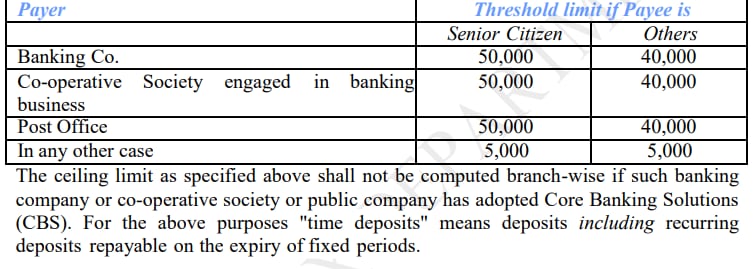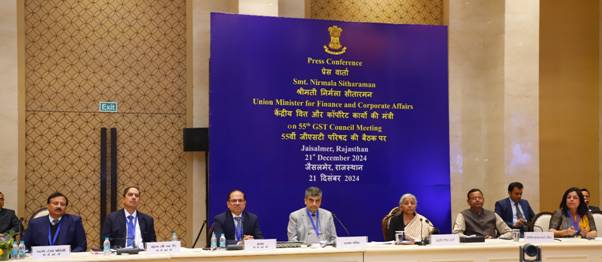Fixed deposits (FD) have gained popularity, with some banks offering up to 9 per cent interest. Despite the allure of high returns and low risk associated with FDs, it’s crucial to recognise that the post-tax return on these investments often falls below the bank’s advertised interest rate.
Like your regular income, the interest earned from Fixed Deposits (FDs) is subject to tax deductions. This deducted tax is known as Tax Deducted at Source (TDS). Whether the fixed deposit is with a bank, post office, or NBFC, TDS is deducted in accordance with income tax regulations. As per section 194A, tax is to be deducted at the time of payment or credit of interest (to any account by whatever name is called), whichever is earlier.
How much income is exempted from TDS?
As per the Income Tax Act, the exemption limit for TDS deduction on FD is Rs 40,000 for individuals (excluding senior citizens) and Rs. 50,000 for senior citizens.
Income Tax Department
Let’s understand with an example: An individual with a fixed deposit at ABC Bank earning an annual interest of Rs 55,000 will have tax deducted at source (TDS) by the bank. According to section 194A, no TDS is applicable if the interest amount does not exceed Rs 40,000 (increased limit for banks and post offices). However, since the annual interest in this case exceeds Rs. 40,000, the bank is required to deduct TDS on the entire interest amount of Rs 55,000.
Notably, the TDS rate on fixed deposits was 10 per cent for the assessment year 2024-25 if the annual interest exceeds Rs 10,000. However, due to an increase in the TDS deduction limit on FD announced in the interim budget 2019, this limit has been raised to Rs 40,000 annually, applicable for the same assessment year. According to existing Income Tax rules, if a PAN Card is not provided to the bank, the TDS rate on FD interest is 20 per cent.
How to avail of a TDS waiver?
According to the provisions of the Income Tax Act, to prevent TDS deduction on fixed deposits, individuals with a total income below the taxable limit can submit Form 15G (for those under 60 years) or Form 15H (for senior citizens aged 60 or older) to the bank. These forms are applicable for residents whose taxes sum up to zero. It’s crucial to submit these forms at the beginning of the financial year.
Forms 15G/H are self-declaration forms designed to prevent unnecessary TDS deductions on income below the taxable threshold. The exemption limits for different age groups are Rs 2.5 lakh for individuals below 60 years, Rs 3 lakh for senior citizens aged 60 to 79, and Rs 5 lakh for those aged 80 or above.
Form 15G (for those below 60 years) requires interest income not to exceed the basic exemption limit. However, Form 15H (for senior citizens) can be submitted even if interest income surpasses the limit, provided the taxable income, after deductions, remains below the exemption limit.
These forms are applicable to various income sources such as interest income, rental income, dividends, etc., excluding salary income. It is crucial to note that a separate form must be submitted for each account and purpose. For individuals with multiple FDs, if the interest income from a single branch exceeds Rs 10,000 in a financial year, it is necessary to file Form 15G/H to avoid TDS deduction.
“Declaration in Form No. 15G/15H can be made, if the annual interest does not exceed the exemption limit (i.e. Rs.2,50,000 or Rs. 3,00,000 or Rs. 5,00,000, as the case may be). However, this condition is not applicable in case of a senior citizen (i.e. resident individual of at least 60 years of age) i.e. a resident senior citizen can furnish declaration in form 15H even if annual interest likely to be paid to him exceeds the exemption limit of Rs. 2,50,000 or Rs. 5,00,000, as the case may be, provided the tax payable on his total income after considering the rebate under section 87A is nil,” said the I-T department.
For example: A 35-year-old individual, with an annual income of Rs 2,35,000 and interest receipts on her FDs amounting to Rs. 50,000, should submit Form 15G. However, since the interest income exceeds the TDS exemption limit by Rs 10,000, the bank will deduct TDS at 10 per cent unless the person provides proof of zero tax dues through Form 15G.
If you fail to submit Form 15G/H, you can still claim a refund by filing an income tax return. It’s essential to note that these forms are valid for one year only, requiring annual submission to prevent banks from deducting tax.
Visit www.cagurujiclasses.com for practical courses











